Haltwhistle e l’Europa che poteva essere, e che forse non sarà più
E' il centro geografico della Gran Bretagna, e con il suo gemellaggio è anche simbolo di un'Europa che dopo la Brexit non esisterà più.
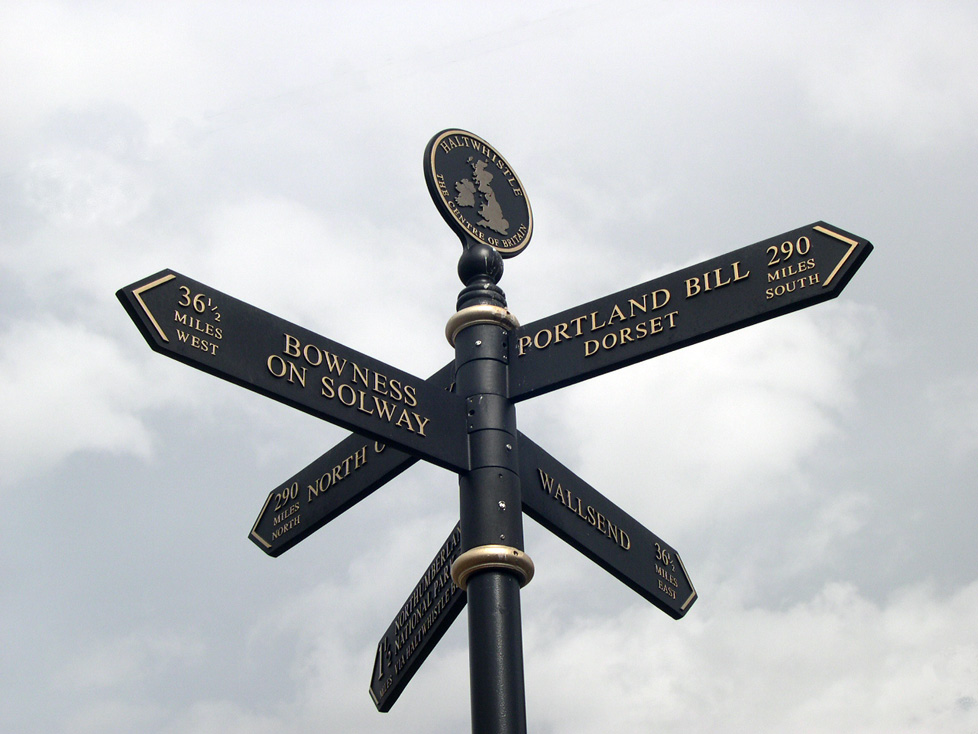
Già solo pronunciarne il nome è un’impresa non da poco per un italiano non troppo avvezzo alla lingua inglese: Haltwhistle. Si perché bisogna aspirare un po’ l’acca iniziale, poi far scivolare la lingua tra i denti nel pronunciare quella t seguita dalla w, e finire con quel triplo suono consonantico così ostico per chi parla una lingua piena di vocali tonde e piene. Provateci, è già un bel esercizio. A ciò aggiungiamo che, causa Brexit, questa località è ormai fuori da ogni mappa europea, e infine, last but not least, di questi tempi di restrizioni non è proprio una località facile da raggiungere visto che, secondo la nuova mappa europea del rischio, si trova in zona rossa.
E invece io ne voglio parlare proprio in questo periodo, e per più di una ragione.
Intanto perché Haltwhistle ha rappresentato per molto tempo un tentativo concreto di fare Europa, attraverso uno splendido gemellaggio a tre, portato avanti per anni con un paese italiano, Valentano, e un paese francese, St. Mèen Le Grand. Gemellaggio che, ahimé, di questi tempi di limitazioni rischia di naufragare. Poi perché Haltwhistle è il centro della Gran Bretagna. E vi assicuro che non è cosa da trascurare, visto che ben pochi lo sanno. Ci sono infatti diversi modi di misurare il centro geografico di un territorio, e comunque venga fatto, per almeno tre di essi, il centro della Gran Bretagna risulta sempre Haltwhistle. Cosa significa? Che se tagliamo da nord a sud l’isola, ma proprio tutta l’isola, cioè dalle isole Orcadi fino al faro di Portland Bill, oppure da Bowness On Solvay, all’estremo ovest, fino a Wollsend situato ad est, Haltwhistle sarà sempre al centro. Curioso vero? E il bello è che di questa centralità i suoi cittadini vanno veramente fieri.
Ma tutto questo rischia di cambiare in un prossimo futuro. E dipenderà dalla Scozia, dove l’attuale governo ha intenzione di organizzare un nuovo referendum per l’indipendenza in cui gli scozzesi deciderebbero se restare europei e lasciare il governo di Downing Street o al contrario restare britannici e lasciare gli ormeggi con l’Europa. A quel punto, il piccolo paese di Haltwhistle perderebbe il primato di centro dell’isola britannica, perché verrebbe staccato idealmente tutto l’ultimo pezzo più a nord, la Scozia appunto.
Insomma un affascinante incognita geopolitica che forse non metterà in subbuglio i quasi quattromila abitanti di questo delizioso villaggio, ma che sarà interessante da monitorare, se non altro per capire quale sarà il destino dei nostri amici d’oltremanica. Amici che hanno sempre creduto, per primi, in un’Europa possibile e attuabile, che ci hanno provato fin da subito, perché il loro gemellaggio, prima con i francesi di St. Mèen Le Grand e poi con gli italiani di Valentano, ha avuto la concretezza di viaggi continui ed ospitalità tra famiglie, di scambi di doni e organizzazione di incontri, di risate e di strette di mano, di balli tradizionali e di notti insonni passate a chiacchierare davanti a un boccale di birra. Amici che hanno sempre dato molta importanza, e a ragion veduta, alle relazioni tra paesi e all’eccitante melting pot etnico e culturale che può nascere da esse.
Sarà forse per la loro antica storia? E già perché non è storia da poco, visto che vantano sul proprio territorio addirittura il Vallo di Adriano, quella imponente fortificazione di pietra voluta dall’imperatore romano Adriano nel II secolo d.c. per segnare il confine tra la provincia romana e l’antica Caledonia. Un muro che rappresentava il confine più settentrionale dell’Impero Romano in Britannia, e che oggi è diventato Patrimonio dell’Unesco. Una struttura impressionante a vederla da vicino, quasi 70 miglia di tracciato tra le colline dei North Pennines, la spina dorsale dell’Inghilterra, che solca brughiere e pascoli verdeggianti, tra resti di torri e accampamenti militari. Un muro che se da un lato è simbolo di separazione e di chiusura, tuttavia dall’altro esprime anche un’idea forte di inclusione visto che inglobava al suo interno tutto l’Impero Romano, un impero che nella sua massima estensione comprendeva non solo quasi tutta l’odierna Europa ma anche l’area mediterranea con il nord Africa e il vicino Oriente. Insomma un’area euro-mediterranea che, onestamente, è stata ed è ancora il sogno di molti di noi. Ma anche il sogno di tutti gli abitanti di Haltwhistle, da sempre forza motrice di quel gemellaggio che ha visto per anni le famiglie inglesi francesi e italiane ospitarsi vicendevolmente nelle loro case, costruendo quell’Europa autentica fatta di pranzi intorno a lunghe tavolate, di gesti buffi per riuscire a capirsi anche senza condividere la lingua, di abbracci sinceri e di addii affettuosi con l’augurio di rivedersi l’anno successivo.
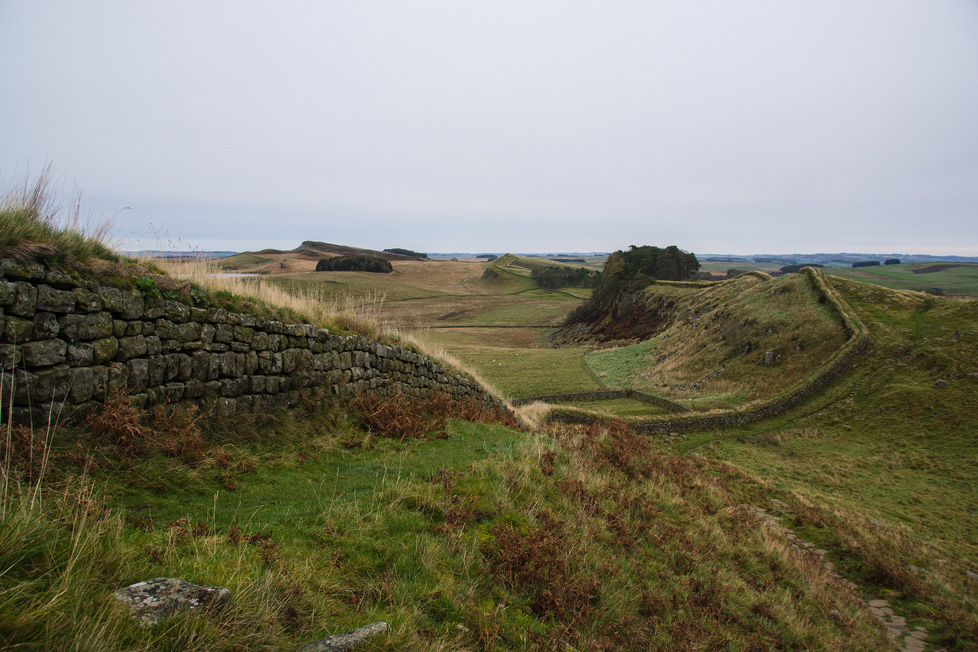
Un gemellaggio che avevamo costruito (si, avevamo, perché qui in Italia me ne ero fatta promotrice io stessa insieme a due splendidi amici dall’indole cosmopolita, Pat e Alan) cercando di individuare i punti in comune, che erano tanti, e tralasciando le differenze. Terre di castelli e di contese tra poteri forti, terre di monaci e di eremiti, terre di banditi e di briganti, terre di muretti a secco e di pecore, terre incontaminate ricche di flora e fauna impareggiabili, terre di tradizioni e sapori, di case in pietra e di camini.
Terre vicine e simili che ora invece devono fingere di non conoscersi, tenersi a distanza, perchè qualcosa è andato storto e la Brexit ha segnato un punto di non ritorno.



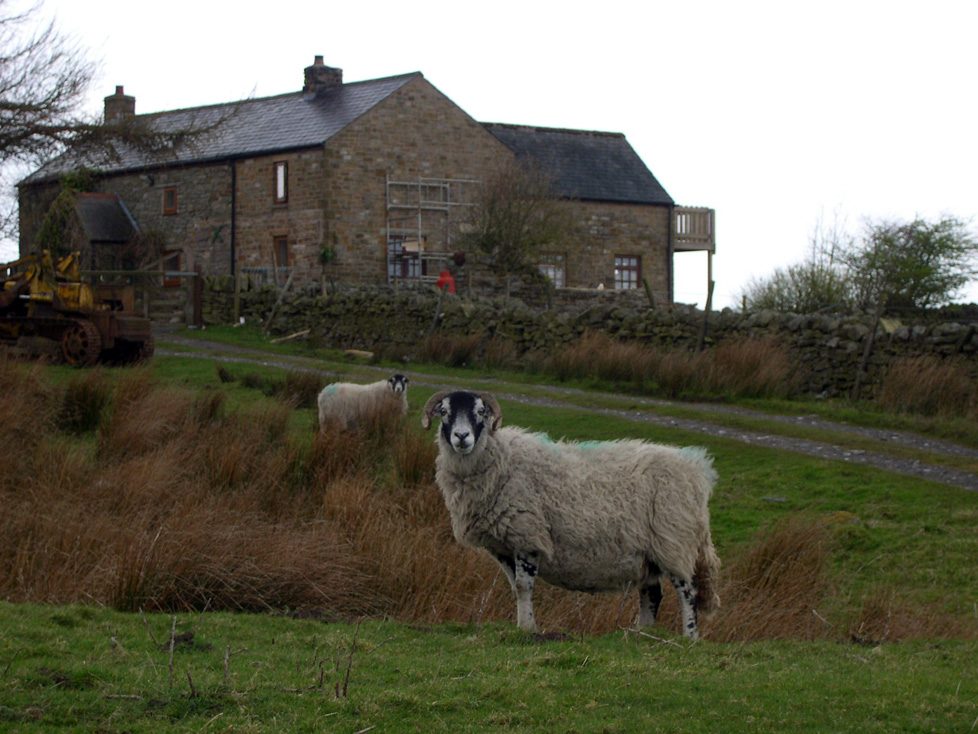

E pensare che Haltwhistle non è solo il Vallo di Adriano: qui c’è il Northumberland National Park, il parco nazionale più settentrionale d’Inghilterra e il meno popolato, ma anche il fiume Tyne, che vanta una ricchissima fauna e che nasce dalla confluenza di due fiumi in una zona che già nel nome esprime tutta la sua poesia, The meeting of the Waters (l’incontro delle acque), nei pressi di Hexham. Il suo centro storico custodisce la medievale chiesa della Santa Croce risalente al XIII secolo, che vanta un’architettura gotica inglese di avvolgente bellezza e conserva decorazioni pre-raffaellite ed eccellenti vetrate policrome.
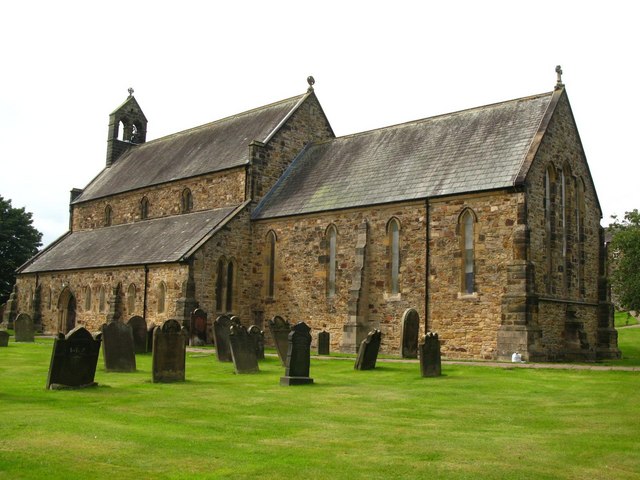
E soprattutto, dulcis in fundo, qui si può scoprire un’enogastronomia che non t’aspetti, a partire dai tanti microbirrifici e brewpub che producono in proprio ottime birre artigianali, da accompagnare con gustose salsicce servite con contorno di cipolle e patate. Ma il piatto che più mi emoziona è il porridge, emblema della colazione inglese.
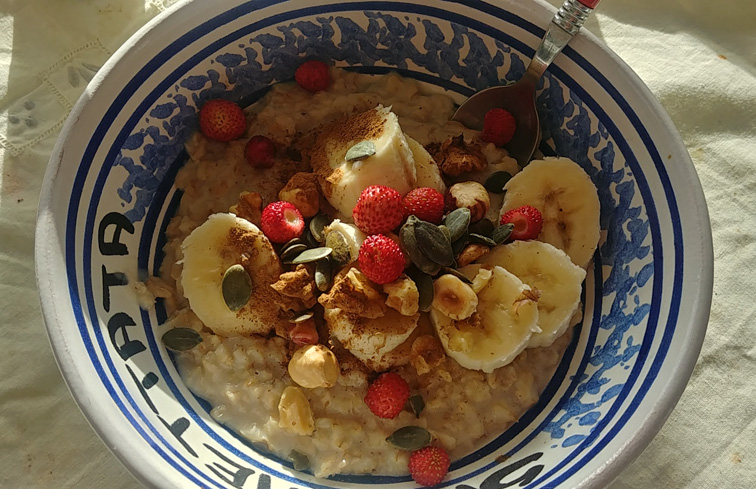
Una zuppa di avena arricchita da tutto quello che la fantasia può aggiungere: noci, mele, banane, nocciole, cannella, frutta secca, menta, cioccolato. Una zuppa che se un inglese te la prepara è perché ti vuole coccolare e farti sentire a casa. Ed è proprio ciò che fece Malcolm a casa sua, quando mi svegliai il primo mattino di quello splendido soggiorno in famiglia, di qualche anno fa. Ecco, di tanto in tanto me lo preparo da sola il mio porridge, è il modo più autentico per ricordare un amico che non c’è più.
ENGLISH VERSION
Even pronouncing its name is certainly not easy for an Italian who is not used to the English language: Haltwhistle. Because you have to inhale the initial h a little, then slide your tongue between your teeth while pronouncing the t followed by the w, and then finish with that triple consonant, a sound so difficult for those who speak a language full of round and full vowels like Italian. Try it, it’s a good exercise. To this let us add that, due to Brexit, this location is now off any European map. And, last but not least, in these times of restrictions it is not exactly an easy location to reach, given that, the new European risk map, puts it into the red zone.
However, I want to talk about it right now, and for more than one reason.
Firstly, because Haltwhistle has long represented a concrete attempt to make Europe, through a splendid 3-way Twinning, carried out for many years with the Italian town of Valentano, and the French town St. Mèen Le Grand. A twinning, unfortunately, that risks being wrecked by present day restrictions on freedom of movement. Secondly, because Haltwhistle is the centre of Great Britain. This fact must not be overlooked, since very few people know it. There are in fact several different ways of measuring the geographic centre of a territory, and however it is done, for at least three of them, the centre of Great Britain is always Haltwhistle.
What does it mean? If we cut the island from north to south, (the northern sea tip of Sutherland in Scotland to Portland Bill Lighthouse on the south coast), or from Bowness-on-Solway, Cumbria in the extreme west, to Tynemouth located in the east, Haltwhistle will always be in the centre. Curious, isn’t it? And the beauty is that its citizens take great pride in being at this centre point.
But this situation may well change in the near future. And it will depend on Scotland. In fact, by May 2021 the government intends to organize a new referendum in which the Scots will choose whether to remain in the European Union and leave the Downing Street government or on the contrary remain British and give up their ties with Europe. At that point, the small town of Haltwhistle would lose its primacy as the centre of the British mainland, because the last area further north, Scotland, would be detached from the rest of Britain.
In short, a fascinating geopolitical unknown that perhaps will not upset the almost four thousand inhabitants of that delightful village, but which will be interesting to monitor, if only to understand what the fate of our friends across the channel will be. Friends, incidentally, who have always believed above all, in the possibility of a united, harmonious Europe, and have helped to build it. From the start, through their first twinning, with the French town of St. Mèen Le Grand and later with Italians in Valentano, regular visits were organized with hospitality offered by families in the hosting country. Friendships were created and for good reasons; between people who gave great importance to relationships between countries, and enjoyed the exciting ethnic, cultural melting pot that can arise from them. The certainty of frequent visits, hospitality between families, exchange of gifts, meetings, excursions, traditional dances, jokes, laughter, handshakes and hugs were frequent. And sleepless nights over a glass of beer or bottle of wine.
Could it be because of their ancient history? A relevant history, given that they even boast Hadrian’s Wall on their territory, an imposing stone fortification commissioned by the Roman emperor Hadrian in the 2nd century C.E. to mark the border between the Roman province and ancient Caledonia. A wall that represented the northernmost border of the Roman Empire in Britain, and which today has become a UNESCO World Heritage Site. An impressive structure when observed closely, almost 70 miles of path in the hills of the North Pennines, the backbone of England, which cuts through moors and verdant pastures, among the remains of towers and military camps. A wall that, if on the one hand is a symbol of separation and closure, however on the other it also expresses a strong idea of inclusion since it encompassed the entire Roman Empire.
An empire that in its maximum extension included not only almost all of today’s Europe but also the Mediterranean area with North Africa and the Near East.
In short, a Euro-Mediterranean area that, honestly, has been, and still is, the dream of many of us. But also the dream of all the inhabitants of Haltwhistle, which has always been the driving force of that twinning that has seen for years the English French and Italian families host each other in their homes, building that authentic Europe made of lunches around long tables, of funny gestures to be understood even without sharing the same language, of sincere hugs and affectionate farewells with the wish to meet again the following year.
A twinning that we had built (yes, we had, because here in Italy it was I who promoted it together with two splendid friends with a cosmopolitan nature, Pat and Alan) trying to identify the common points, which were many, and ignoring the differences. Lands of castles and struggles between strong powers, lands of monks and hermits, lands of bandits and brigands, lands of dry stone walls and sheep, lands rich in incomparable flora and fauna, lands of traditions and flavours, lands of brick houses and fireplaces.
Nearby and similar lands that now, instead, have to pretend not to know each other, keep their distance, because something has gone wrong and Brexit has marked a point of no return.
Yet Haltwhistle is not only Hadrian’s Wall: here there is Northumberland National Park, the northernmost national park in England and the least populated, but also the River Tyne, which boasts a very rich fauna and which arises from the confluence of two rivers in an area that already expresses all its poetry in its name, The meeting of the Waters, near Hexham. Its historic centre houses the medieval church of the Holy Cross dating back to the thirteenth century, which boasts English Gothic architecture of enveloping beauty and preserves pre-Raphaelite decorations and excellent polychrome windows.
And above all, last but not least, here you can discover a food and wine that you do not expect, starting from the many microbreweries and brewpubs that produce excellent craft beers on their own, to be accompanied with tasty sausages served with onions and potatoes. But the course that excites me most is porridge, the emblem of the English breakfast.
An oatmeal broth enriched with all that the imagination can add: nuts, apples, bananas, hazelnuts, cinnamon, dried fruit, mint, chocolate. A dish that if an Englishman prepares it for you is because he wants to pamper you and make you feel at home. And that’s exactly what Malcolm did at his home when I woke up the first morning of that wonderful family stay a few years ago. Nowadays, from time to time, I prepare my
own porridge, the most true and meaningful way to remember a friend who is no longer here with us.
